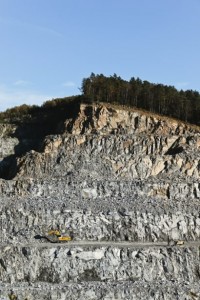While concrete remains one of the most popular building materials in the world, people are looking at alternatives. The goal is to choose ones that are more eco-friendly. There is also chance for other benefits too. As one of the top designers of residential architecture in London, we want to look at the potential for structural stone. It could be the solution many people are looking for.
The impact of concrete
While concrete is strong and can last a long time, there are a number of negatives to using it. Firstly is the environmental impact of producing it. Extracting limestone, heating it, and then grinding into cement is energy intensive and produces a lot of greenhouse gases.
Secondly, working with it can take a lot of time. Whether it is prefabrication or pouring on site, it is necessary to create formwork first and add rebar. You then pour concrete and have to wait for it to cure. This can take as long as 28 days.
Why is stone better?
 There are a number of advantages if you use natural stone. Let’s look at some of the main ones and why they are beneficial for residential architecture in London.
There are a number of advantages if you use natural stone. Let’s look at some of the main ones and why they are beneficial for residential architecture in London.
Firstly, it has a much smaller carbon footprint. It is energy intensive to mine the material, but you don’t need any of the subsequent steps you need with concrete. All it takes is cutting the stone to size. So, it can be better for the environment.
In addition, the natural stone can be stronger. It naturally has more strength because it is a solid piece of material with no water content. You can also improve it similarly to using rebar in concrete. What you do here is drill holes in the stone. You then run strong steel cables through them. It boosts the tensile and compressive strength. Just one or two cables can do the trick, even achieving a similar capacity to steel beams.
Impressively the stone is better in terms of natural cooling. This is because it has a higher thermal mass than concrete. So, it can avoid the need for air conditioning.
Stone slabs also have excellent fire resistant properties. Concrete can generally withstand fire for an hour. However, the natural stone can last for three hours or more in tests.
A more eco-friendly option
As we already said, using the natural stone instead of concrete would mean fewer carbon emissions. There are also other advantages for the environment.
Large amounts of stone are already mined all around the world. However, waste levels can be very high. This happens due to large amounts of stone being rejected because they are not visually consistent. But, why not use it for structural applications instead? It could be beams, columns, and slabs that are largely unseen. This would be far better for the planet.
Using local stone would also help the environment. The materials would not need to travel as far, reducing the energy and carbon footprint of transportation.
You can make further carbon savings by using unfinished stone. This would save the energy and emissions from processes like honing and polishing.
Explore the options for residential architecture in London
One of our favourite things about architecture is you can look at different materials. There are plenty of opportunities to be creative and help the environment in the process. While natural stone is a niche choice right now, it could become more popular in the future for things like beams and other structural elements. It is a good idea to check if it would work for you.
So, if you want to look at your options for residential architecture in London, please contact us. We can work with you to explore different materials and more.
